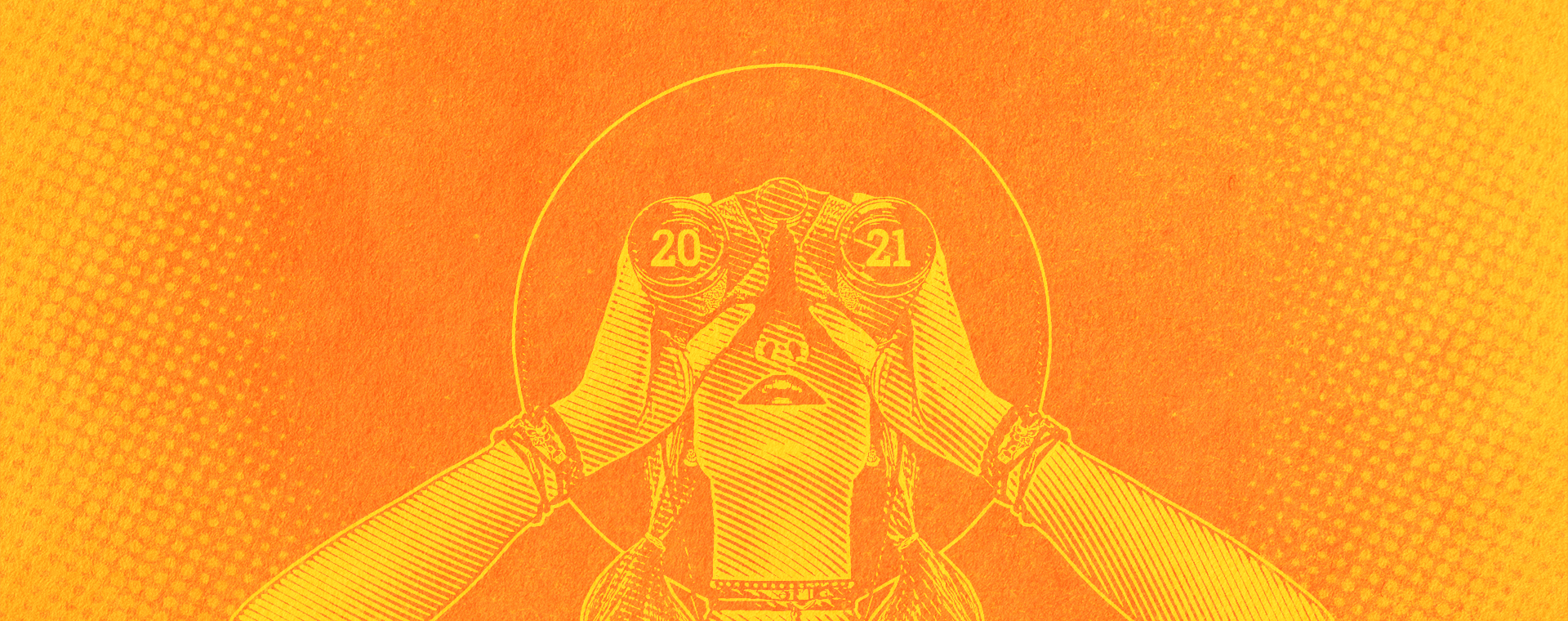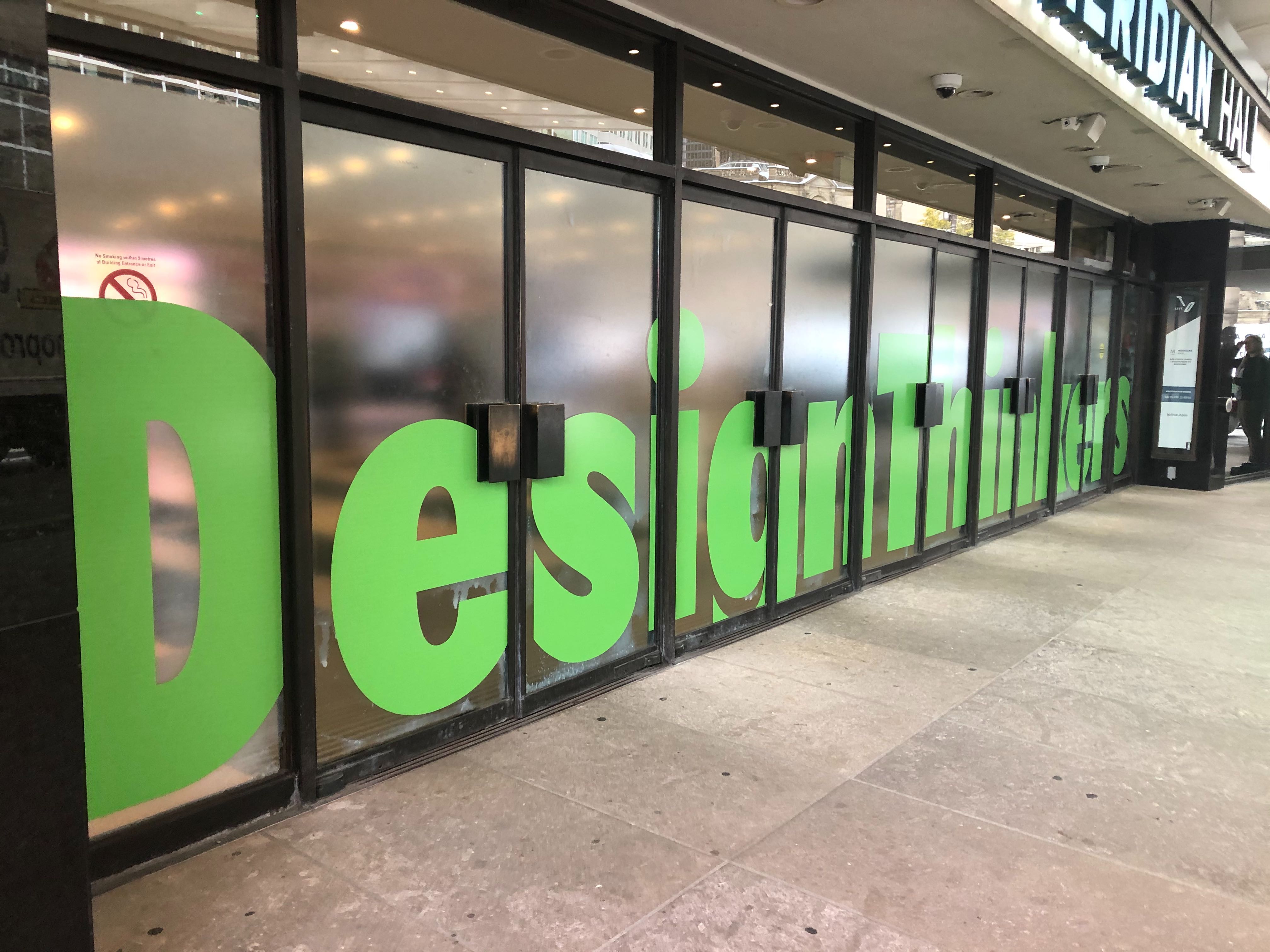Our key takeaways from DesignThinkers Toronto 2025
By: Sara Kohan
October 9, 2025 | Reading Time: 6 mins
We stepped away from our desks and headed to Toronto for Canada’s largest design conference, DesignThinkers 2025. Last time we attended was in 2019 and the industry has gone through some massive shifts. This year’s theme, Shiftshapers, was all about challenging the way we see things, pushing ourselves to question assumptions, embrace change, and use design as a force to shape what comes next. And yes, it included lots of discussions around AI.
If you couldn’t make it we’re here to curb your FOMO and share what we learned!
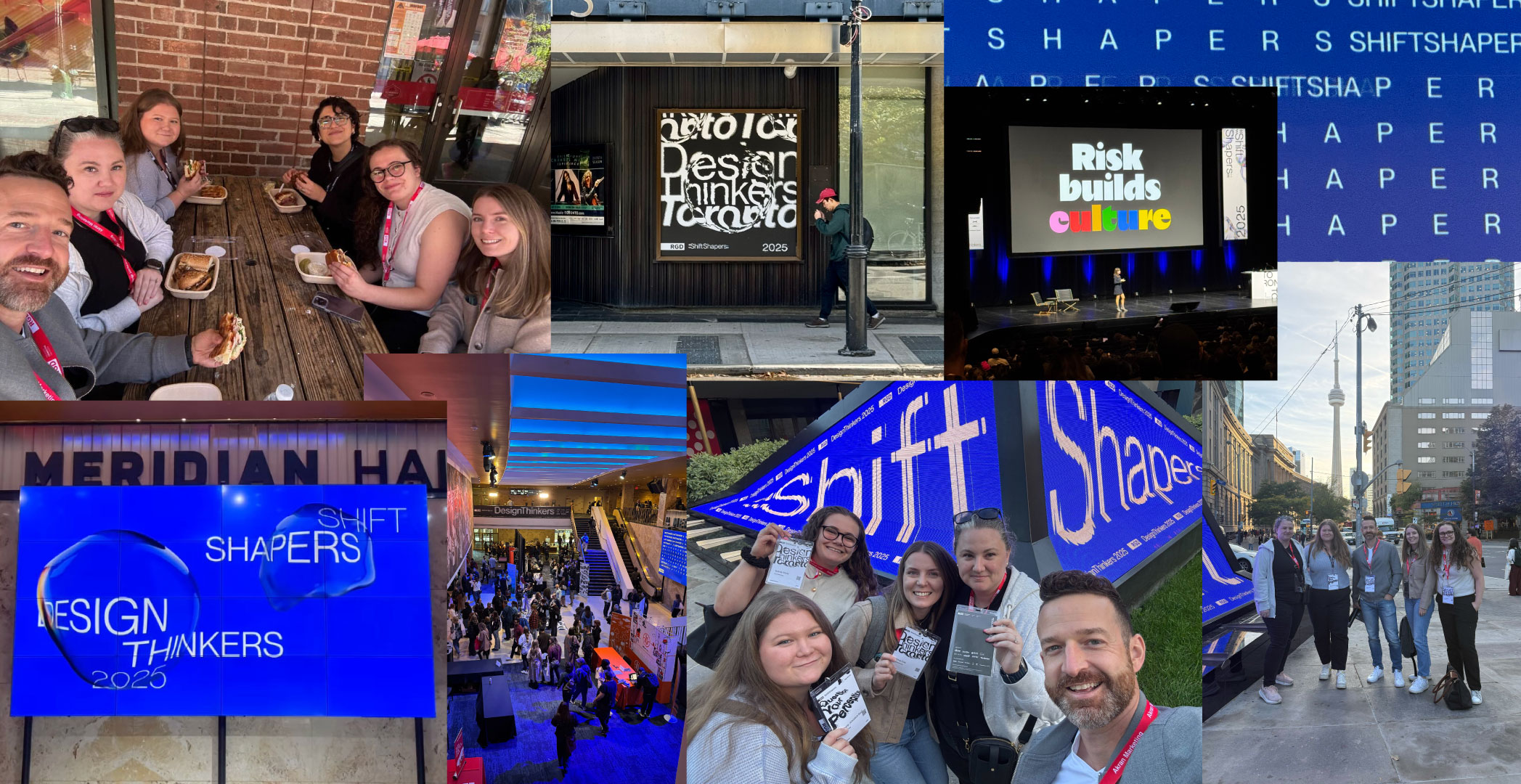
Design is a force for accessibility
One of the coolest things I came across was a pamphlet on digitizing culture and heritage, specifically the Indigenous North American Type Collection by Typotheque. This project represents five years of community-partnered research with First Nations and Inuit communities, resulting in a large set of fonts that support digital access, local typographic expectations, and the unique writing systems of Indigenous communities across North America.
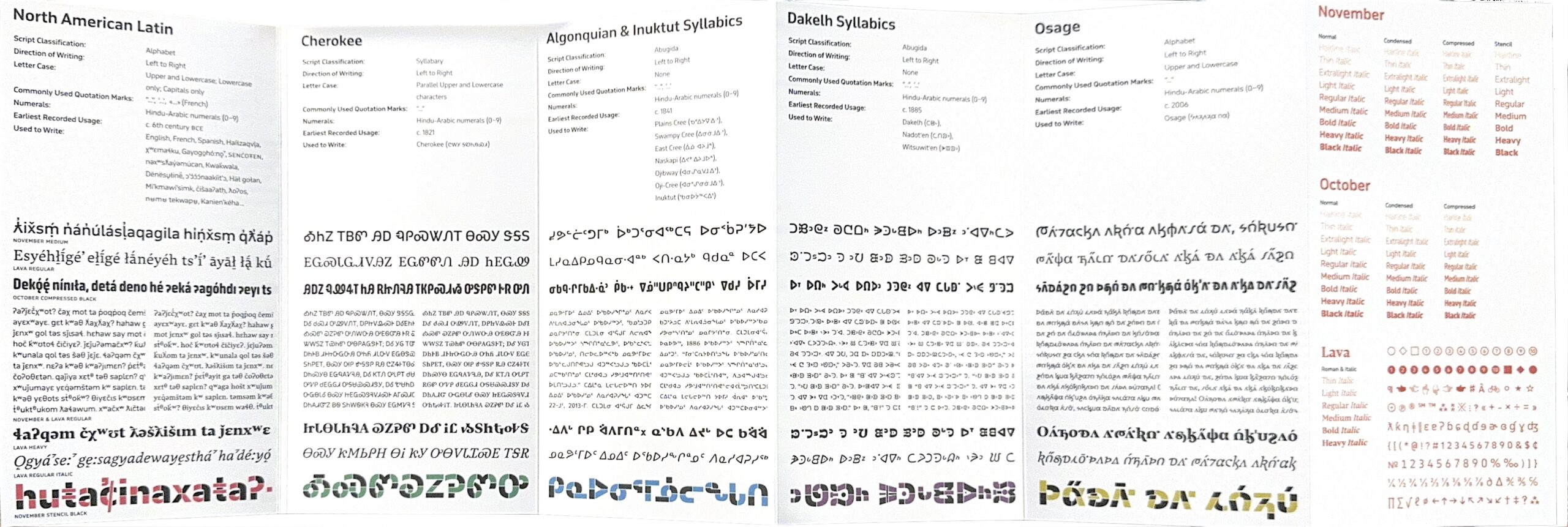
I loved this because it’s about cultural preservation. Design is a massive force for accessibility, language revitalization, and making sure no community gets left behind in the digital age. As the world digitizes, it’s easy to feel like we’re moving toward sameness, but projects like this remind us that local languages, histories, and ways of being deserve to be carried forward.
Sara Kohan, Digital Marketing Manager
This was a great reminder that the DNA of design goes beyond aesthetic because it’s about shaping how we make experiences functional, accessible and inclusive. The number of Indigenous language speakers in Canada has dropped to 237,420 in 2021—a decline of 10,750 since 2016. Revitalization is possible when communities and programs invest in language learning such as this.
Creativity needs room for play
Chris Clarke, the Editorial Creative Director at The Guardian walked us through how experimentation, silliness and play are crucial in creating designs with heart. From using his son’s doodles on magazine covers to creating custom collage branding for the coverage of elections, he demonstrated that one of the biggest successes as a creative leader was ensuring there’s room for play.
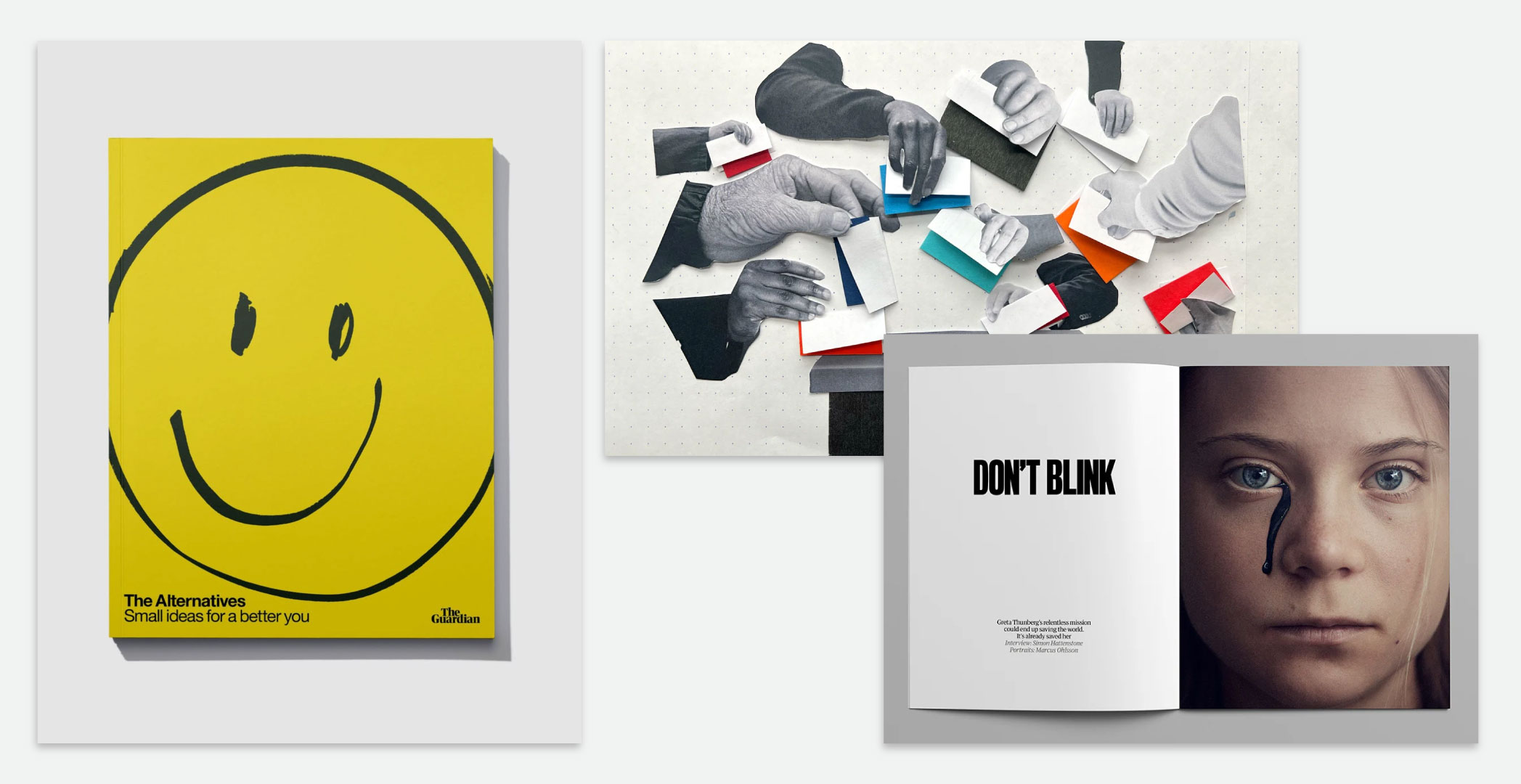 He discussed The Guardian’s shift from traditional newspaper format towards magazine format and how that changed their design system. As Chris noted: “First design the building. Then graffiti it.” The shift to the magazine format allowed them to build a strong grid. This acted as a skeleton to play more with layouts which they could even break out of at times. They embraced magazine thinking which emphasized design as part of the storytelling so it was no longer columns on columns of text only. The new approach carried more space for the design to create a feeling amongst their readership.
He discussed The Guardian’s shift from traditional newspaper format towards magazine format and how that changed their design system. As Chris noted: “First design the building. Then graffiti it.” The shift to the magazine format allowed them to build a strong grid. This acted as a skeleton to play more with layouts which they could even break out of at times. They embraced magazine thinking which emphasized design as part of the storytelling so it was no longer columns on columns of text only. The new approach carried more space for the design to create a feeling amongst their readership.
Chris emphasized that play isn’t a distraction; it’s a strategy. Curiosity, risk-taking, and experimentation can help push bigger and better ideas and creating space for out-of-the-box thinking in your career will help you grow, stay creative, and stand out in this world. It’s important to be bold and allow yourself to push past the safe or expected to unlock your best work.
Bethany Johnston-Baril, Intermediate Graphic Designer
The future of design leadership rewards vulnerability
The Confidence Con, Stephen Gates, the founder of CRZY, unpacked how “be bold” has become an empty buzzword in the creative world. Everyone says it, but few actually live it. We over-polish, chase approvals, and mistake being loud for being brave. As he put it, “If we want to shape the future of our industry, we can’t just talk bold, we have to be bold.”
Stephen explained that true boldness isn’t about flashy ideas. It’s about doing the uncomfortable things, unlearning old habits, being vulnerable, and making choices that don’t always feel safe. He shared ways to recognize when fear is driving decisions, lead with bravery, and build team cultures where risk is rewarded instead of avoided.
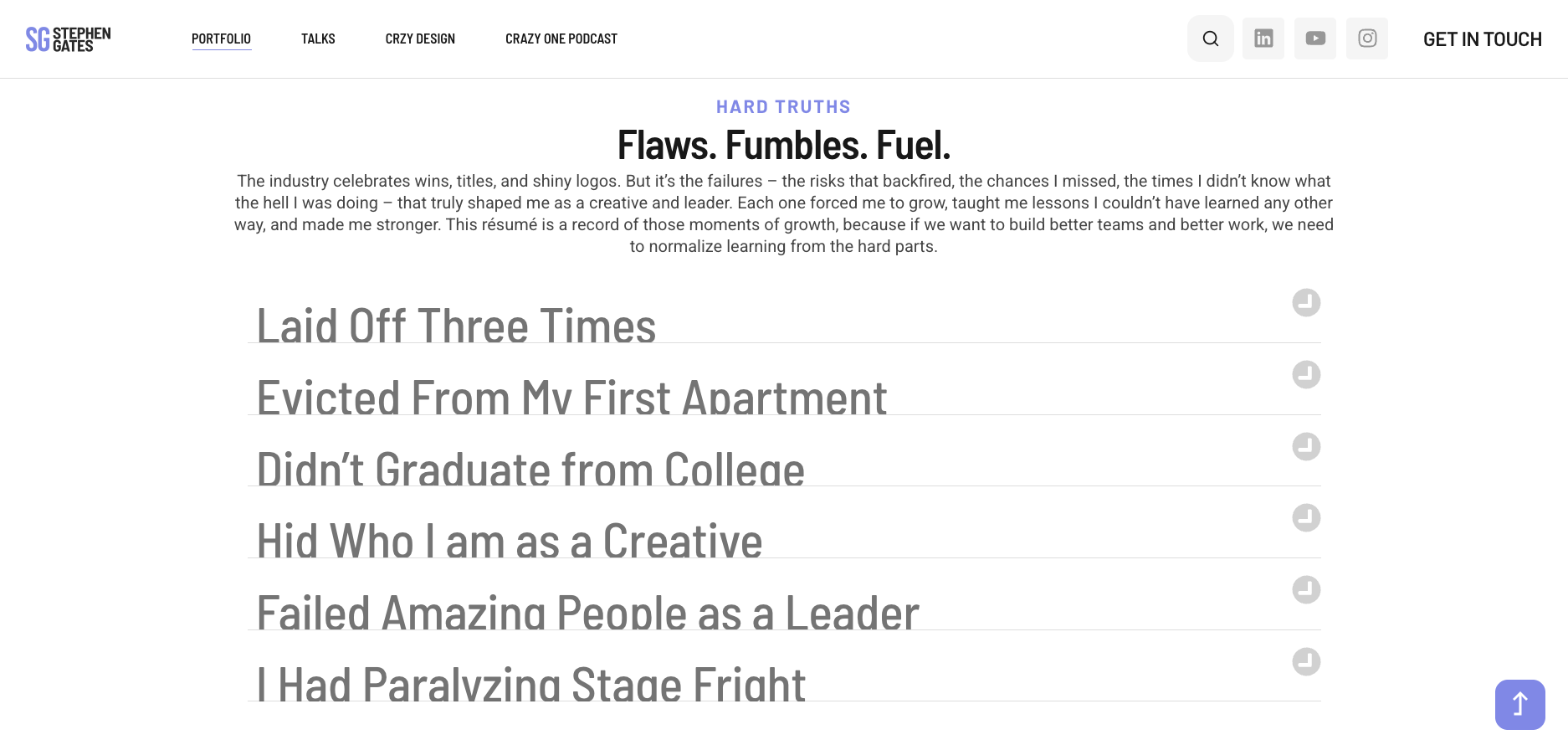
What I loved was his failure résumé. A space to own the moments that didn’t go as planned but taught him something important. These are learnings that shape your career and give you perspective. In agency life, things rarely follow a straight path, and that’s okay. The stumbles, pivots, and experiments are where the real growth happens. If you want to achieve something you’ve never had before, you have to do something you’ve never done before.
Sydney Bokla, Digital Marketing Coordinator
This talk resonated with many Stryvers from different view-points and encouraged us to adopt new ways of working:
As leaders, we should celebrate the journey as much as the results—rewarding both emotional and practical trust. Stephen shared the idea of a “belly flop of the week,” where a team member is recognized for taking a risk, sharing a mistake, and reflecting on what they learned. I loved this concept and realized that at Stryve, our Friday “proud of’s” and “show n’tells” focus mainly on outcomes. Adding something like this could help us build even stronger psychological safety as a team.
Grace Cole, Creative Director and Head of People Ops
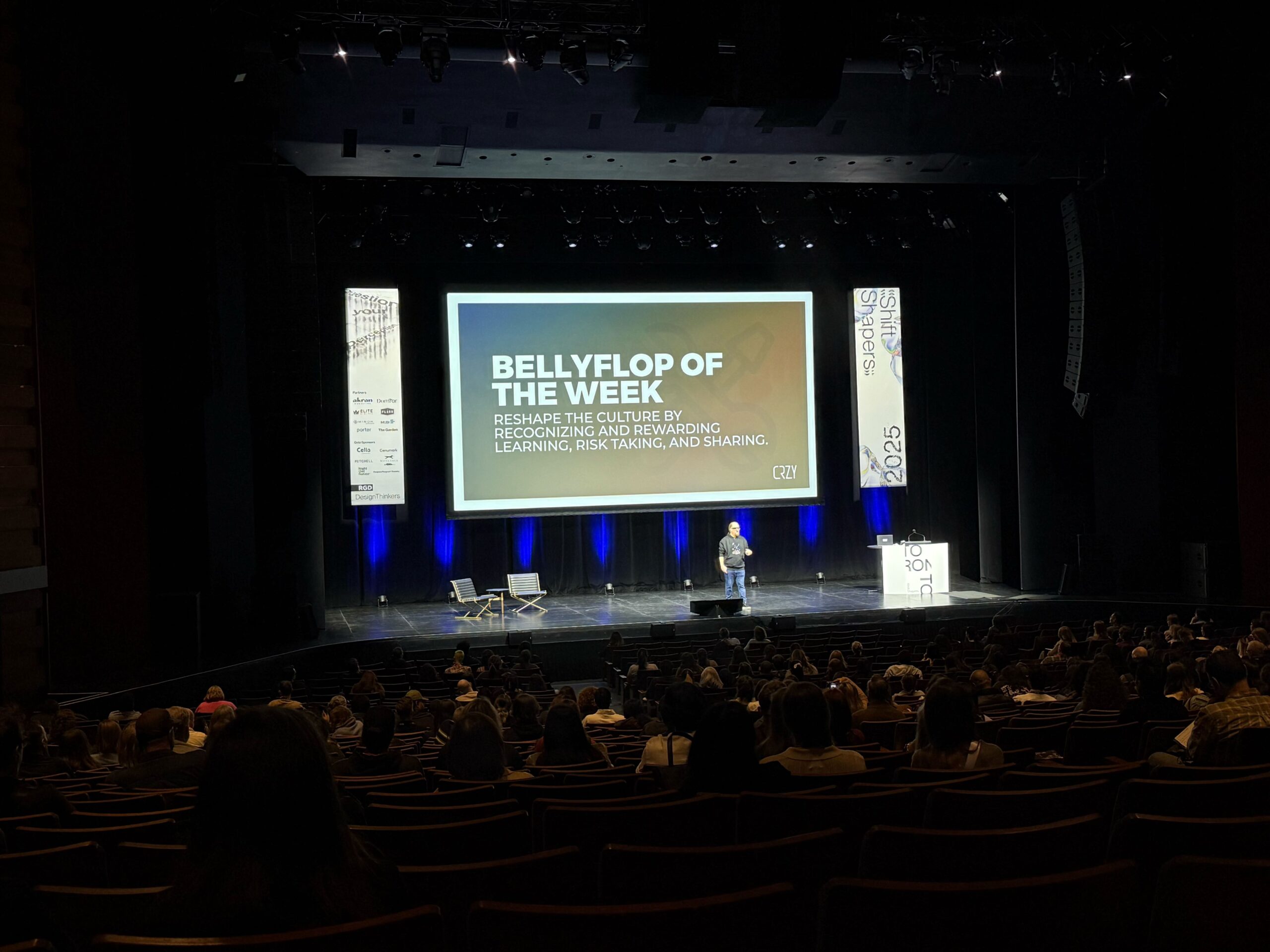
Simple solutions can have big impact
A moment that really stood out for Brent was from Mardis Bagley’s talk Turning Science Fiction into Reality. He shared a project with Jaza Energy that reimagines what reliable electricity can mean for rural Africa.
In Nigerian villages, blackouts can drag on for weeks, sometimes leaving communities with only two days of power in an entire month. These outages affect everything, including safety, education, health, and the lifeblood of local commerce. For many, the only alternative has been costly, polluting diesel generators.
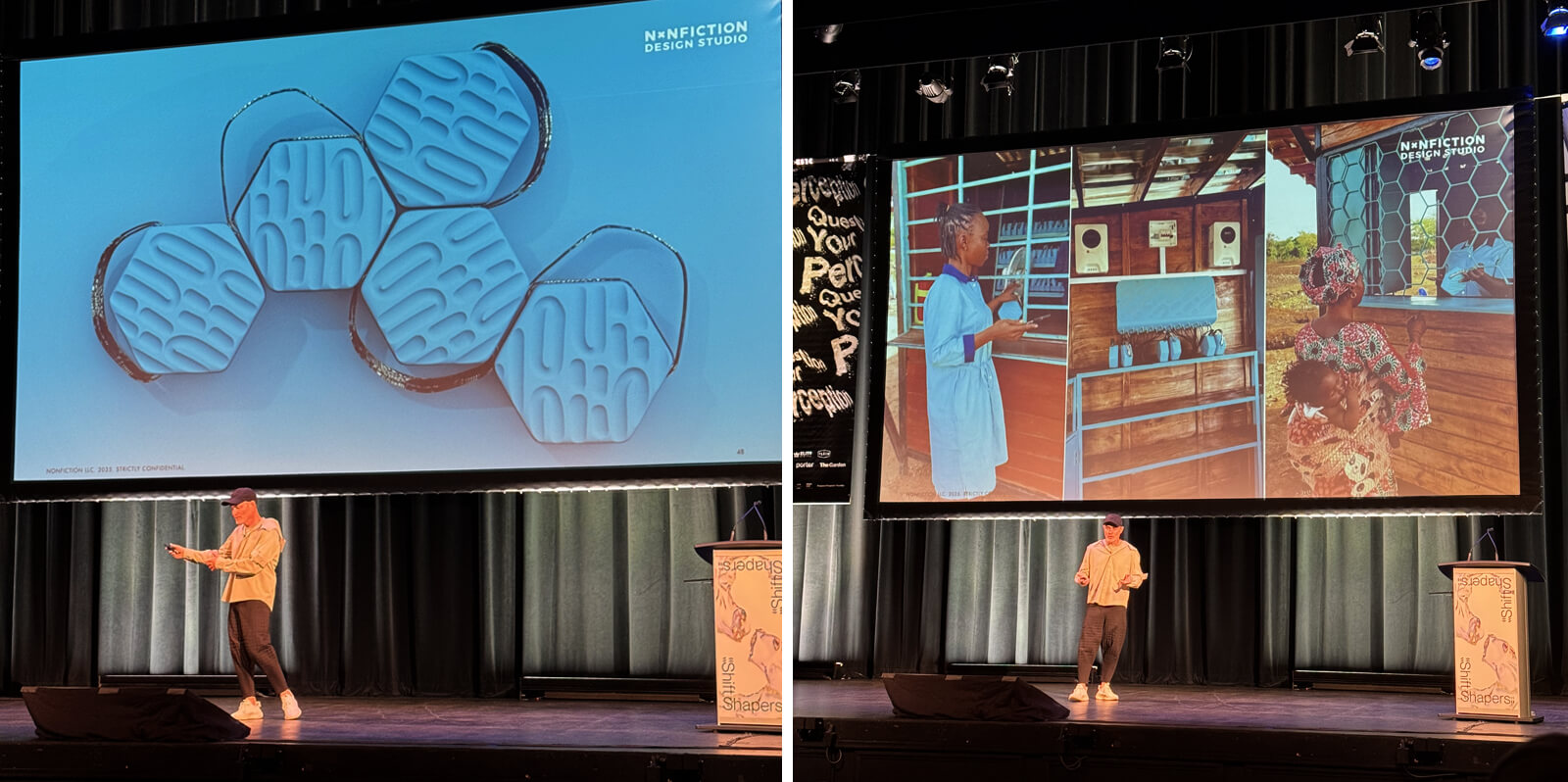
By harnessing the power of the sun, Jaza built easily deployable solar hubs where villagers can rent rechargeable batteries for a small weekly fee. One battery can light a home, charge a phone, run a fan, and even power the point-of-sale machines that small businesses depend on. Wrapped in patterns inspired by Nigerian textiles, these batteries feel rooted in the culture, not just technology dropped in from the outside world.
The true power of the entire operation is run by local women, known as Jaza Stars. Like queen bees, they’re central to the hive, turning energy into financial independence, equality, and opportunity for their communities.
“What struck me about this project is how simple solutions can have a big impact. In a world that often feels overwhelming, where it’s easy to feel like you can’t make a difference, it’s proof that small ideas can spark meaningful change. A reminder that design is much more than just how something looks.”
Brent Morrison, Senior Graphic Designer
Creative bravery is broken because people are afraid to fail
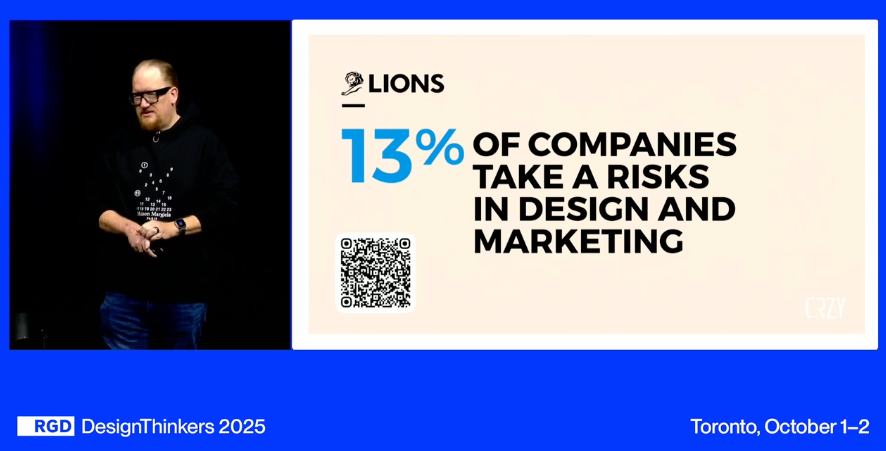
Stephen Gates shared a study called Lions’ State of Creativity 2025: A Call for Confidence, highlighting a few key statistics proving the importance and impact of design. “Risk-taking brands generate four times higher profit margins, according to research by WARC and Kantar. And brands with a high appetite for creative risk are 33% more likely to see long-term revenue growth, reports Deloitte.” Yet, only 13% of companies were taking risks in design and marketing. The deeper issue that Stephen pointed out was that creativity and design thrive on trust, risk, experimentation and learning while corporate culture thrives on control and compliance. Ultimately, this creates tension in your brand’s ability to do great things because of fear of rejection, approval culture or metric obsession.
He encouraged people to “create work people hate.” His point was simple: when you create marketing, campaigns, or designs, they should speak to someone specific. If you’re designing with intention for a clear audience, it’s okay if not everyone connects with it because great work isn’t meant for everyone. Brands can dilute themselves and their purpose when they aren’t open to this risk of not being someone’s cup of tea.
Grace Cole, Creative Director


